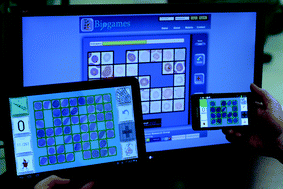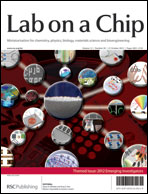Crowd-sourced BioGames: managing the big data problem for next-generation lab-on-a-chip platforms†
Abstract
We describe a crowd-sourcing based solution for handling large quantities of data that are created by e.g., emerging digital imaging and sensing devices, including next generation lab-on-a-chip platforms. We show that in cases where the diagnosis is a binary decision (e.g., positive vs. negative, or infected vs. uninfected), it is possible to make accurate diagnosis by crowd-sourcing the raw data (e.g., microscopic images of specimens/cells) using entertaining digital games (i.e., BioGames) that are played on PCs, tablets or mobile phones. We report the results and the analysis of a large-scale public BioGames experiment toward diagnosis of malaria infected human red blood cells (RBCs), where binary responses from approximately 1000 untrained individuals from more than 60 different countries are combined together (corresponding to more than 1 million cell diagnoses), resulting in an accuracy level that is comparable to those of expert medical professionals. This BioGames platform holds promise toward cost-effective and accurate tele-pathology, improved training of medical personnel, and can also be used to manage the “Big Data” problem that is emerging through next generation digital lab-on-a-chip devices.


 Please wait while we load your content...
Please wait while we load your content...